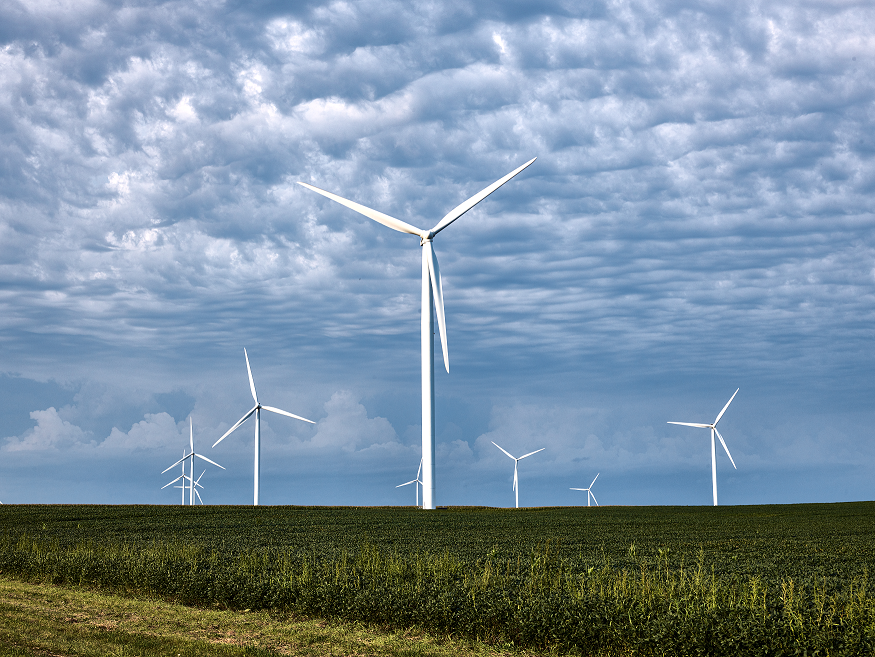How State Can Achieve 100% Clean Energy
Report pushes for zero carbon emissions by 2050 with switch to electric cars, electric heat.

Midwestern wind farm (Carol M. Highsmith | Library of Congress collection, public domain)
Wisconsin could cut its net carbon emissions to zero by 2050 and boost its economy in the process, according to reports released Tuesday by environmental and clean-energy groups.
Meeting that timeline “will require aggressive action at virtually every level,” said the organizations, Clean Wisconsin and RENEW Wisconsin, in their announcement of the findings. “But the benefits of these large scale investments in Wisconsin are far-reaching.”
The report was produced by Evolved Energy Research, GridLab, Clean Wisconsin and RENEW Wisconsin. Evolved Energy Research is a consulting and research firm in San Francisco, and GridLab is a Berkeley, Calif., nonprofit that provides technical advice on shifting the electric grid to cleaner sources of power.
The second report, “The economic impacts of decarbonization in Wisconsin,” was produced by Cambridge Econometrics in consultation with the other four organizations. It projects that reaching the net-zero carbon goal could save $2 billion to $4.4 billion in health care costs in 2050, reduce deaths from air pollution by anywhere from 28 to 63 per million people in a year, expand the state economy by 3% or $16 billion, add 68,000 jobs and cut fuel and energy costs for consumers.
The clean energy report states that reaching net-zero carbon emissions by 2050 will require more than simply moving Wisconsin’s electric power supply to clean energy sources; it will also require people to drive more electric vehicles, heat more buildings with electricity instead of natural gas or other fossil fuels, and increase the efficiency in the use of power.
“Achieving net zero emissions will mean changes to virtually every sector of Wisconsin’s economy, from utility-scale electricity production to transportation and manufacturing,” a summary of the two reports states. “Modeling shows that this transition is possible and cost-effective. Ultimately, Wisconsin can achieve net zero emissions at similar energy costs to taking no policy action or implementing clean electricity policy alone.”
The expanded electrification would increase the state’s electricity demand by more than two and a half times, with all of that demand powered by clean sources, while the load on gas and liquid fuel use falls to near zero.
Along with policies in government and industry to encourage the transition, the report also uses modeling to project consumer behaviors that will help advance the shift — purchasing more electric vehicles, for example.
“Our study shows an individual who switches from a gas vehicle to an EV or electrifies their home in this decade stands to reap the most benefits over the next three decades,” says Brett Korte, a Clean Wisconsin attorney who worked with the report’s authors.
Automakers are increasing the availability of electric vehicles, and General Motors has announced it will produce only electric vehicles starting in 2035, Korte says “but public policy has a role to play in accelerating this transition by expanding the necessary infrastructure, incentivizing these technologies — instead of fossil fuels — and ensuring equitable access to these technologies and economic benefits.”
Reports set 2050 goal to eliminate principal culprit for climate change in Wisconsin was originally published by Wisconsin Examiner





















